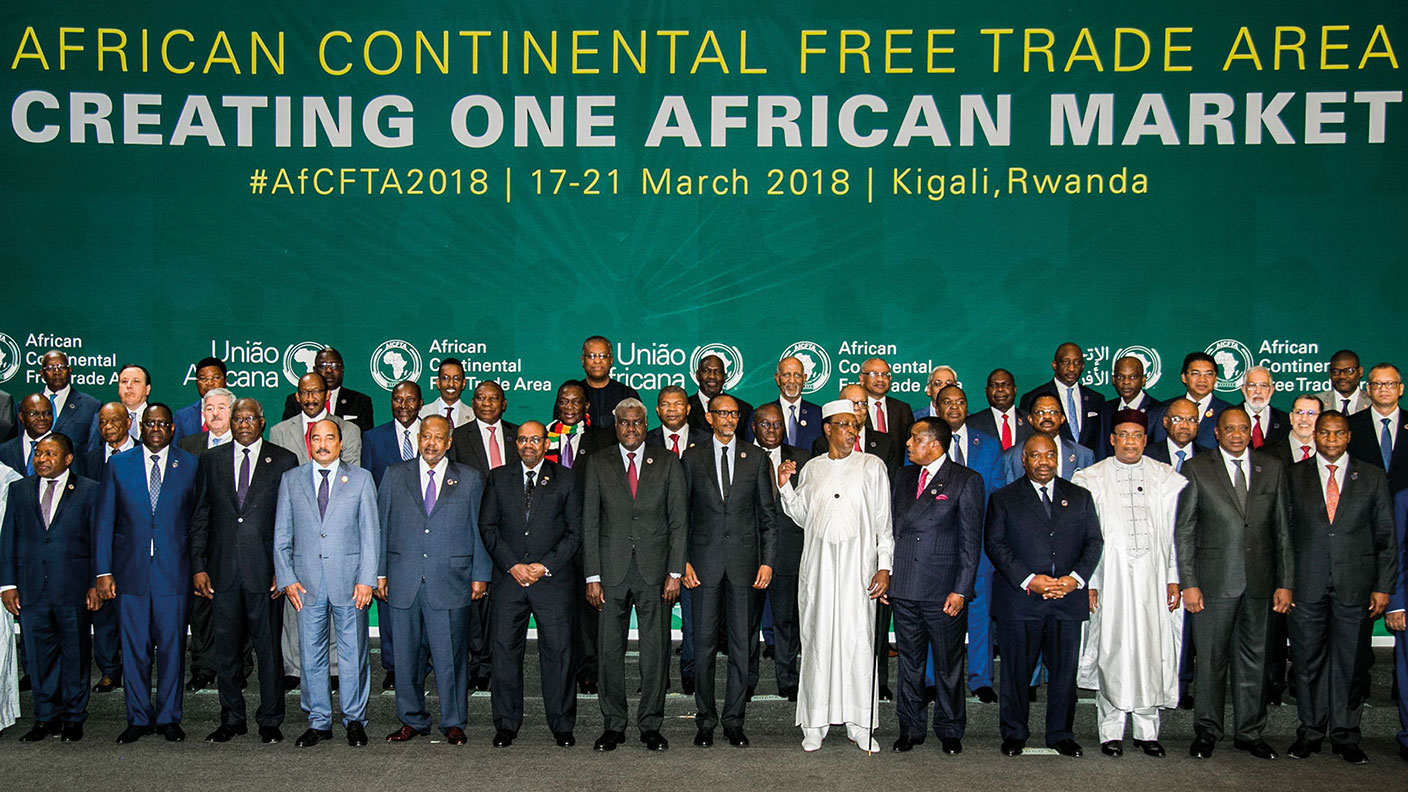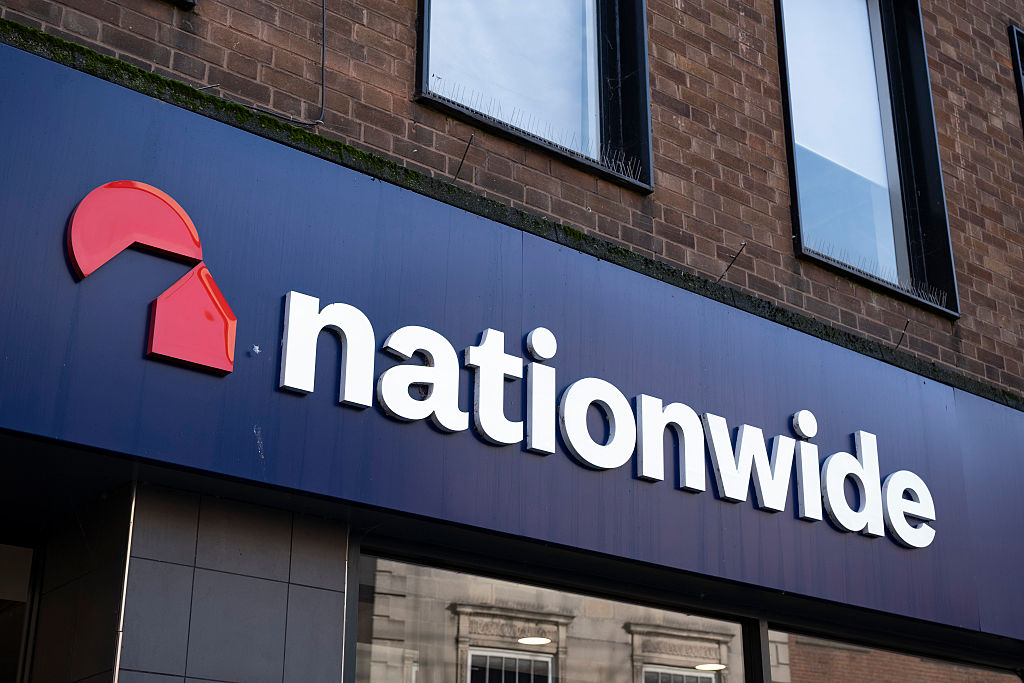How to invest in Africa as it takes its place in the post-pandemic sun
The African Continental Free Trade Agreement has come into force. Favourable demographics, improving governance and a growing technology sector also bode well for the continent, says Matthew Partridge.


Africa has been in the news for all the wrong reasons. A new wave of Covid-19 in South Africa, fuelled by a new and apparently more infectious strain of the virus, has already led to new restrictions. Analysts fear that both the severity and the length of the pandemic, and the damage to the region’s economies, will be compounded by this new strain. However, investors should look beyond the grim immediate news: the continent’s prospects are surprisingly good.
Towards an African single market
One of the reasons why Africa’s economic development has been slower than elsewhere is its failure to embrace free trade. One measure of this is the level of tariffs, or taxes on imports. According to the World Bank, the average tariffs in the UK and US are 1.6% and 1.7% respectively. By contrast, South Africa charges an average of 4.3%, Nigeria 8.5% and Kenya 10.1%. As a result, total trade (imports and exports of goods and services) accounts for 64% of UK GDP, and an average of 61% for members of the OECD (an association of developed states). But it is worth only a third of GDP in Kenya, South Africa and Nigeria.
In the past, the continent’s leaders tried to rectify this problem by using bilateral and regional trade agreements to reduce tariffs. However, these agreements were patchy and incomplete; hence the plan for a more ambitious scheme that would cover the entire continent.
MoneyWeek
Subscribe to MoneyWeek today and get your first six magazine issues absolutely FREE

Sign up to Money Morning
Don't miss the latest investment and personal finances news, market analysis, plus money-saving tips with our free twice-daily newsletter
Don't miss the latest investment and personal finances news, market analysis, plus money-saving tips with our free twice-daily newsletter
In 2018, 54 out of 55 members of the African Union, from Algeria and Egypt in northern Africa to South Africa in the south, signed up to a deal creating the African Continental Free Trade Area, or AfCFTA (the only exception being Eritrea). Enough countries (34) ratified the trade deal last year for it to come into effect for all signatories at the start of this year.
The AfCFTA is certainly an ambitious project. Not only does it immediately slash most tariffs between member states, but it also has the ultimate goal of creating a single market in goods and services with free movement of capital and people, which should help stimulate investment. There are also plans to set up a customs union, with a common external tariff.
While such deals theoretically reduce individual trade flexibility for individual countries, a pan-continental approach should accelerate the demise of protectionism and facilitate better trade deals with other major countries and trade blocs than individual countries could negotiate on their own.
The agreement is “a great opportunity for d the continent will also Africa”, says Sergey Dergachev, senior portfolio manager and head of emerging markets at Union Investment, one of Germany’s largest asset managers. By lowering tariff barriers it should tackle one of the continent’s main problems, which is “the low level of intra-African trade”.
Lower trade barriers and relaxed rules on free movement around the continent will also helpAfrica benefit from the “demographic dividend” of a relatively young population, with a median age of only 20 (half that of the UK). Combined with the rise of virtual working, which will boost the opportunities for digital outsourcing, it should “significantly boost Africa’s long-term growth”.
Removing tariffs by having one pan-African trade agreement, rather than multiple small trade blocs covering only a handful of countries each, is a “huge step” for the continent, and one that should significantly boost GDP growth, agrees Virág Fórizs, emerging markets economist for Capital Economics. The gains will be even greater if the agreement acts as a catalyst for reducing less visible trade barriers. Harmonising regulations, for instance, is part of the eventual road map outlined in the agreement.
Governance is improving
Aside from the economic benefits of freer trade, the AfCFTA is also a symbol of how quickly Africa is getting its economic and political act together. For example, Elizabeth Smith and Jonathan Said of the Tony Blair Institute for Global Change think that while progress has been “slow” over the past six decades, “the pace of reform has noticeably increased over the last five years”.
This is partly due to the fact that “business and civil servants are starting to learn what reforms work”. There is also a move towards appointing experts (rather than politicians) to run key institutions such as central banks.
However, there is also evidence of a generational shift, as “the leaders of many African countries tend to be both younger, typically in their 30s and 40s, and better educated than before”, say Smith and Said. This has made them much more receptive to change and less tolerant of corruption and red tape. It has also led to a “general improvement in property rights and [the] rule of law”. While corruption in extractive industries such as gold and oil endures, it is “reducing elsewhere” and African governments are “now much more focused on creating an environment where industry and agribusiness can thrive”. One indicator of increased stability is the declining number of coups. According to research by Jonathan Powell of the University of Central Florida and Clayton Thyne of the University of Kentucky, there were around 40 coups each decade between 1960 and 2000. However, between 2000 and 2010 the figure fell to 22. Between 2010 and 2019 it declined to 17.
Union Investment’s Dergachev is a little more cautious about progress on African governance. In particular, he argues that when it comes to property rights and corruption, the “gap between the best and the worst performers in Africa is so wide that many people argue that [it is] better to look at progress in individual countries rather than treating the continent as one homogenous whole”. One chronic problem holding back change is a lack of transparency.
Still, even he sees grounds for optimism, especially since there “has recently been a major push across several major countries in the region for increased communication and transparency”. This has already led to “major improvements” in countries such as Senegal, which has shot up from 29 out of 100 to 45 on Transparency International’s Corruption Index in just seven years (the higher the figure, the better, and the global average is around 60/100). There has also been “visible progress” in other countries too.
A near-term boost from vaccines and commodities
Free trade and reduced corruption should raise Africa’s potential growth rate in the medium and long run. But the advent of vaccines will also provide a short-term boost in the next few years. They are not due to arrive in African countries until later this year, or even 2022. However, in the meantime the continent will still benefit indirectly from the return to normal life in the developed world, which is expected to happen around the middle of this year. The subsequent global economic recovery should in turn boost commodity prices, good news for resource-rich Africa.
One commodity likely to do particularly well is oil, which experienced an awful year in 2020, with prices briefly turning negative during the worst of the crisis and only partially recovering since. Fórizs thinks that oil prices will benefit from the fact that “demand for oil-intensive goods and services will increase as people in developed markets return to work and resume travel”.
Supply-side factors are also likely to provide additional support, with oil-exporters’ cartel Opec likely to keep a lid on supply; Saudi Arabia has just reduced its output. As a result, prices are likely to rise from their current level of $50-$55 a barrel to the $60+ levels they were trading at before the virus emerged.
Industrial metals are also on the way up, says Fórizs. Copper in particular, which has already advanced 70% from its lows last March, will continue to benefit from China’s fiscal stimulus, though this is likely to be tapered back by the end of the year. In terms of specific countries, Nigeria, Angola and Ghana will be the biggest winners from a strong oil price, while Zambia and South Africa will do well from strong copper prices, especially as more mines in both countries continue to reopen.
The sectors poised for long-term growth
So which sectors will be the big winners from Africa’s new renaissance? Given that the continent has a “huge comparative advantage in agriculture”, it’s logical to expect continued strong growth in this area, say Smith and Said. Large agribusinesses around the continent are already taking advantage of new technologies to boost production, while the infrastructure for food processing has been developing at a rapid pace. Related industries, such as textiles and cosmetics, are also experiencing rapid growth.
Africa’s location puts it in a great place to benefit from the boom in renewable energy. Already a large proportion of Africa’s agricultural production is being turned into biofuels, including ethanol, with the recent construction of several large ethanol plants.
While solar power is still in its infancy, accounting for only a small proportion of total energy, the large and regular amounts of sunshine, especially around the equator, puts it in a good position to become a solar powerhouse. South Africa is starting to accumulate significant capacity.
Tech is a top tip
However, the long-term growth industry likely to play the greatest part in powering Africa’s future is the rapidly expanding technology sector. One sign of this is the boom in mobile technology, with the number of subscriptions growing by 35% a year, resulting in 85% of the population now having access to mobile telephones.
A third have mobile broadband (by contrast, the number of fixed-line broadband services remains minuscule). Combined with a young population, this is creating technology hubs in Lagos, Nairobi and Johannesburg, with start-ups proliferating.
One example of how the mobile economy is transforming Africa comes from the rise of mobile-payments services such as M-Pesa, which have allowed people without access to banking to transfer money and make payments for goods and services through their phones.
In 2018 two billion financial transactions took place on mobiles in Nigeria alone. A report by the Tony Blair Institute for Global Change estimates that the mobile economy already accounts for 9% of African GDP and has the potential to boost the overall economy by a further 40%.
Africa’s biggest market
Investors in Africa always keep an especially close eye on continental heavyweight South Africa, the second-largest economy after Nigeria and home to Africa’s largest investable market. With a total market capitalisation of $1trn, the Johannesburg Stock Exchange is one of the biggest markets in the world. While it has underperformed the MSCI Emerging Market Index by around 50% over the last five years, Bryony Deuchars, a Global Emerging Market Equities fund manager at Mirabaud Asset Management, is much more bullish about its future.
For example, she notes that after a subdued start to his presidency, which began in February 2018, former businessman Cyril Ramaphosa’s government is starting to get serious about political reform. Recently there has been a crackdown on senior officials and officials from the governing ANC party who have been accused of corruption, while the process of tendering for government contracts has been streamlined and standardised. Last October Ramaphosa outlined an ambitious Economic Reconstruction and Recovery Plan, which aims to raise investment in infrastructure to remove output bottlenecks, such as power shortages, with the private sector playing a key role.
South Africa also typifies several trends that apply to the entire continent. For example, it is urbanising rapidly, with its urban population growing by over eight million over the last decade, a rate of over 2% a year. As a result, two-thirds of South Africa’s population now lives in cities, which has forced the government to spend large sums on infrastructure, including “investment in roads, water sanitation and social housing”. Such investment is good news for housebuilders and construction companies, says Deuchars, both local and international, “who stand to benefit with better visibility and growing order books”.
Another key trend is the growth of the middle class. The new middle class is “aspirational with a high propensity to consume”, with growth in real incomes fuelling discretionary consumption. While South African retailers have a reputation for operating on a lean cost basis, there are also several high-quality ones who have managed to generate excellent returns through the economic cycle. Rising South African growth will “increase the size of the potential market, and will enable these companies to compound their attractive returns over the long run”.
South Africa is also experiencing a financial revolution. Since incumbent banks have “ignored the underbanked and unbanked population”, this has created an “attractive growth opportunity” for a new generation of financial-services companies. Over the last few years South Africa has “witnessed the launch of a number of no-frills banks focusing on low-income consumers”, notably Bank Zero, a savings bank founded by Michael Jordaan, the former CEO of First National Bank. Some have already shown that “with the right range of products and services” they can grow quickly by disrupting the wider banking sector.
What to buy now
A good general African exchange-traded fund (ETF) is the Xtrackers MSCI Africa Top 50 Swap UCITS ETF (LSE: XMAF). It invests in the 50 largest African companies. While South African firms dominate (as you might expect given the relative size of South Africa’s market), firms from other countries account for just under half of the portfolio.
The largest holdings include media group Naspers, Safaricom Telecommunications, miner AngloGold Ashanti and FirstRand Bank. The ETF has a forward price/earnings (p/e) ratio of only six and a dividend yield of 3.8%. The ongoing charge is 0.65%.
If you want to invest in South Africa only, consider the iShares MSCI South Africa UCITS ETF (LSE: SRSA). This tracks the South African market, which is on a cyclically adjusted p/e ratio (Cape) of 15, below both the emerging-market average of 16 and the global mean of 23.
Naspers is the largest of the ETF’s 37 holdings, accounting for just under 30% of the portfolio. The total expense ratio of 0.65% is reasonable for an emerging market ETF. One South African technology company we’ve been bullish on for some time is MiX Telematics (Johannesburg: MIX, NYSE: MIXT), which helps 767,000 companies in 120 countries to manage their delivery services by tracking their fleets of trucks, vans and cars in order to cut delivery times and save on fuel.
While the company trades at a pricey 31 times forward earnings, this is more than justified by sales growth of 10% a year for the past five years, combined with returns on capital, a key gauge of profitability, that are consistently above 15%.
One way to invest in the growth of mobile services in Africa is through London-listed Helios Towers (LSE: HTWS). The firm, which is part of the FTSE 250, currently owns nearly 7,000 mobile towers throughout Africa, mainly in Tanzania, but also in Ghana and South Africa.
Its model involves buying, or building, the towers and then leasing them to mobile companies. Sales doubled between 2015 and 2020. The large initial capital investment has resulted in big losses, so this is not an investment for the risk-averse. However, it is expected to make a small profit this year.
Another way to play the mobile boom in Africa is through Airtel Africa (LSE: AAF), which provides mobile-phone and money transfer services in 14 African countries, including Nigeria. It is the second-largest mobile operator in Africa with 116 million customers, while its money transfer service has over 19 million users.
Revenue is growing by around 6% a year and it is making a strong return on capital of over 13%. Despite this it still only trades on a forward p/e of around 12.
African agribusiness, as well as related distribution industries, should be big winners from the shift to freer pan-African trade. That makes Zambeef Products (LSE: ZAM) worth a look. Not only is it the largest beef producer in Zambia, but it also owns a fast-food chain and a trucking company.
Even though revenue has grown by over 150% over the last five years, and is expected to continue at a brisk pace, the company still trades at just seven times forward earnings – good news for both value and growth investors.
Get the latest financial news, insights and expert analysis from our award-winning MoneyWeek team, to help you understand what really matters when it comes to your finances.

-
 Football fans issued warning over ticket scams ahead of 2026 World Cup
Football fans issued warning over ticket scams ahead of 2026 World CupSantander customers lost more to football scams in the first six months of 2025 compared to the same period in 2024, when total losses surged due to the Euros
-
 Nationwide fined £44 million over “inadequate” anti-money laundering systems
Nationwide fined £44 million over “inadequate” anti-money laundering systemsFailings in Nationwide’s financial crime processes between October 2016 to July 2021 meant one criminal was able to deposit £26 million from fraudulent Covid furlough payments in just eight days.
-
 Who is Christopher Harborne, crypto billionaire and Reform UK’s new mega-donor?
Who is Christopher Harborne, crypto billionaire and Reform UK’s new mega-donor?Christopher Harborne came into the spotlight when it emerged he had given £9 million to Nigel Farage's Reform UK. How did he make his millions?
-
 The best Christmas gifts for your loved ones
The best Christmas gifts for your loved onesWe round up the best Christmas gifts with a touch of luxury to delight, surprise and amaze family and friends this festive season
-
 Leading European companies offer long-term growth prospects
Leading European companies offer long-term growth prospectsOpinion Alexander Darwall, lead portfolio manager, European Opportunities Trust, picks three European companies where he'd put his money
-
 How to harness the power of dividends
How to harness the power of dividendsDividends went out of style in the pandemic. It’s great to see them back, says Rupert Hargreaves
-
 Why Trustpilot is a stock to watch for exposure to the e-commerce market
Why Trustpilot is a stock to watch for exposure to the e-commerce marketTrustpilot has built a defensible position in one of the most critical areas of the internet: the infrastructure of trust, says Jamie Ward
-
 Tetragon Financial: An exotic investment trust producing stellar returns
Tetragon Financial: An exotic investment trust producing stellar returnsTetragon Financial has performed very well, but it won't appeal to most investors – there are clear reasons for the huge discount, says Rupert Hargreaves
-
 How to capitalise on the pessimism around Britain's stock market
How to capitalise on the pessimism around Britain's stock marketOpinion There was little in the Budget to prop up Britain's stock market, but opportunities are hiding in plain sight. Investors should take advantage while they can
-
 London claims victory in the Brexit wars
London claims victory in the Brexit warsOpinion JPMorgan Chase's decision to build a new headquarters in London is a huge vote of confidence and a sign that the City will remain Europe's key financial hub